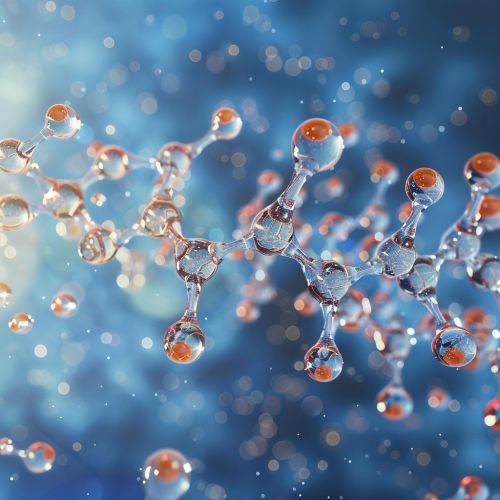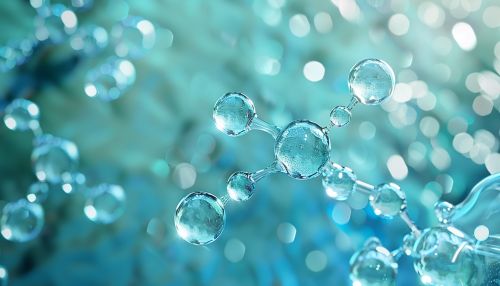Surfactants
Introduction
Surfactants, or surface-active agents, are compounds that lower the surface tension between two liquids, a liquid and a gas, or a liquid and a solid. They are amphiphilic molecules, meaning they contain both hydrophobic (water-repelling) and hydrophilic (water-attracting) parts. This unique structure allows surfactants to interact with both polar and non-polar substances, making them essential in a wide range of applications, from detergents and emulsifiers to pharmaceuticals and enhanced oil recovery.
Chemical Structure and Classification
Surfactants are typically classified based on the nature of their hydrophilic head group. The main categories are:
Anionic Surfactants
Anionic surfactants have a negatively charged hydrophilic head. They are commonly used in household cleaning products due to their excellent cleaning properties. Examples include sodium lauryl sulfate (SLS) and linear alkylbenzene sulfonates (LAS).
Cationic Surfactants
Cationic surfactants possess a positively charged hydrophilic head. These surfactants are often used as fabric softeners and disinfectants. Quaternary ammonium compounds are a well-known class of cationic surfactants.
Nonionic Surfactants
Nonionic surfactants do not carry any charge on their hydrophilic head. They are less sensitive to water hardness and are often used in detergents and personal care products. Examples include ethoxylated alcohols and alkyl polyglucosides.
Zwitterionic Surfactants
Zwitterionic surfactants contain both positive and negative charges on their hydrophilic head, making them neutral overall. They are commonly used in mild personal care products due to their low irritation potential. Examples include betaines and sulfobetaines.


Mechanism of Action
Surfactants work by adsorbing at interfaces, reducing the surface tension, and altering the properties of the interface. This action can be broken down into several key processes:
Micelle Formation
When surfactants are added to water, they form micelles at a certain concentration known as the critical micelle concentration (CMC). In micelles, the hydrophobic tails aggregate in the center, while the hydrophilic heads face outward, interacting with the water. This arrangement allows surfactants to solubilize hydrophobic substances in water.
Emulsification
Surfactants stabilize emulsions by reducing the interfacial tension between immiscible liquids, such as oil and water. This process is crucial in the formulation of products like creams, lotions, and food emulsions.
Wetting and Spreading
Surfactants enhance the wetting and spreading of liquids on solid surfaces by reducing the contact angle. This property is essential in applications like paints, coatings, and agricultural sprays.
Applications
Surfactants are used in a myriad of industries due to their versatile properties. Some of the most significant applications include:
Detergents and Cleaning Agents
Surfactants are the primary active ingredients in detergents and cleaning agents. They help to remove dirt, grease, and stains by emulsifying oils and suspending soil particles in water.
Personal Care Products
In personal care products, surfactants act as emulsifiers, foaming agents, and solubilizers. They are found in shampoos, body washes, toothpastes, and cosmetics.
Pharmaceuticals
Surfactants play a crucial role in drug formulation and delivery. They enhance the solubility and bioavailability of poorly water-soluble drugs and stabilize emulsions and suspensions.
Food Industry
In the food industry, surfactants are used as emulsifiers, foaming agents, and stabilizers. They are essential in the production of products like ice cream, margarine, and salad dressings.
Enhanced Oil Recovery
Surfactants are used in enhanced oil recovery to reduce the interfacial tension between oil and water, improving the extraction of oil from reservoirs.
Environmental Impact and Biodegradability
The widespread use of surfactants has raised concerns about their environmental impact. Many traditional surfactants are not readily biodegradable and can accumulate in the environment, causing pollution and toxicity to aquatic life. As a result, there is a growing interest in developing biodegradable and environmentally friendly surfactants, such as those derived from renewable resources.
Future Trends and Research
The field of surfactants is continually evolving, with ongoing research focused on developing new surfactant molecules with improved properties and lower environmental impact. Some of the emerging trends include:
Green Surfactants
Green surfactants are derived from renewable resources and are designed to be biodegradable and environmentally friendly. Examples include surfactants based on sugars, amino acids, and fatty acids.
Advanced Functional Surfactants
Researchers are developing surfactants with advanced functionalities, such as stimuli-responsive surfactants that change their properties in response to external stimuli like pH, temperature, or light.
Nanotechnology and Surfactants
The integration of nanotechnology with surfactants is opening new possibilities in various fields, including drug delivery, cosmetics, and materials science. Nanostructured surfactants can form unique assemblies with enhanced properties.
